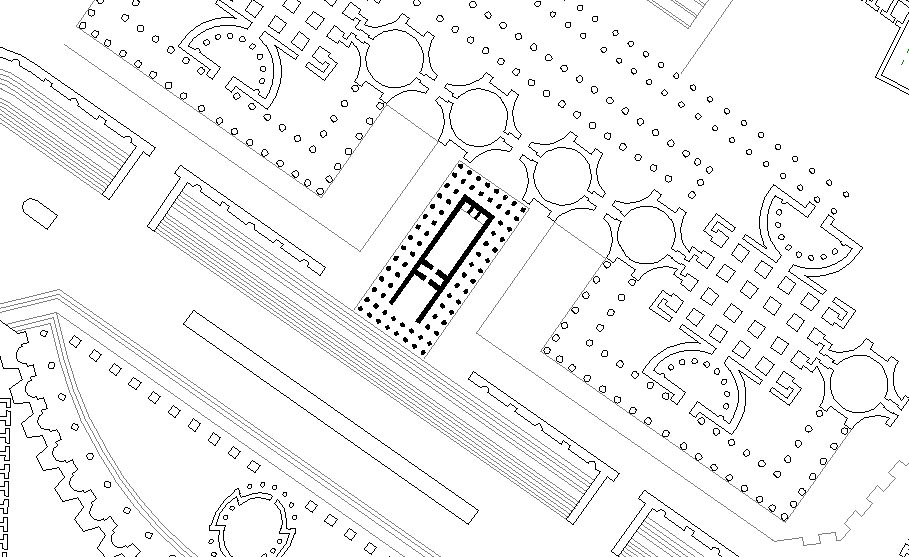Encyclopedia Ichnographica | Templum Novum Quirini | 1/1 |
|
The temple of Quirinus represented perhaps the oldest cult in this part of the city. Its establishment was ascribed to Numa, and the name was said to have been given to the porta Quirinalis, and presumably to the hill itself, because of a shrine of Quirinus which was near the gate. The builder of the actual temple of Quirinus is said to have been L. Papirius Cursor, in 293 B.C., although an assembly of the senate is said to have been held in this temple in 453 B.C. In 206 B.C. the temple was injured by lightning, and it was burned in 49 B.C., but soon rebuilt. A final restoration was completed by Augustus in 16 B.C., and this structure lasted at least as long as the empire. It is described as being dipteral, octostyle, with a pronaos and a porch in the rear. It had seventy-six columns in all, two rows of fifteen each on the sides and a double row of eight at each end, and was surrounded by a porticus. Augustus's restoration occupied the site of the temple of Papirius, and this has been determined, by the finding of inscriptions, to be north of the Alta Semita, but whether in the very centre of the royal gardens or in their eastern part is a disputed point. It is also uncertain whether or not this temple stood on the site of the original sacellum Quirini, which was near the porta Quirinalis. (Platner) |
Romulus |
|
Quondam © 2010.03.08 |
